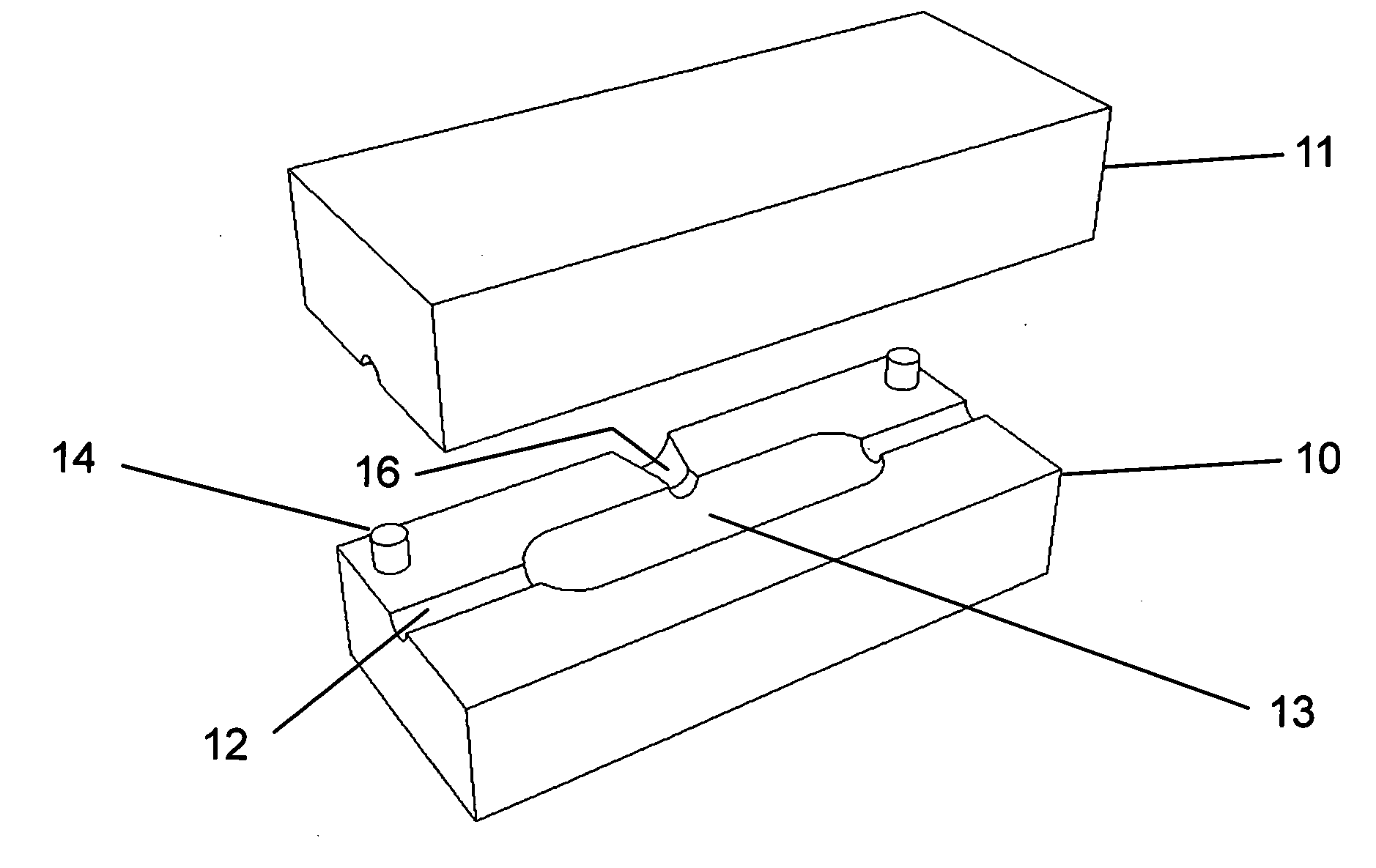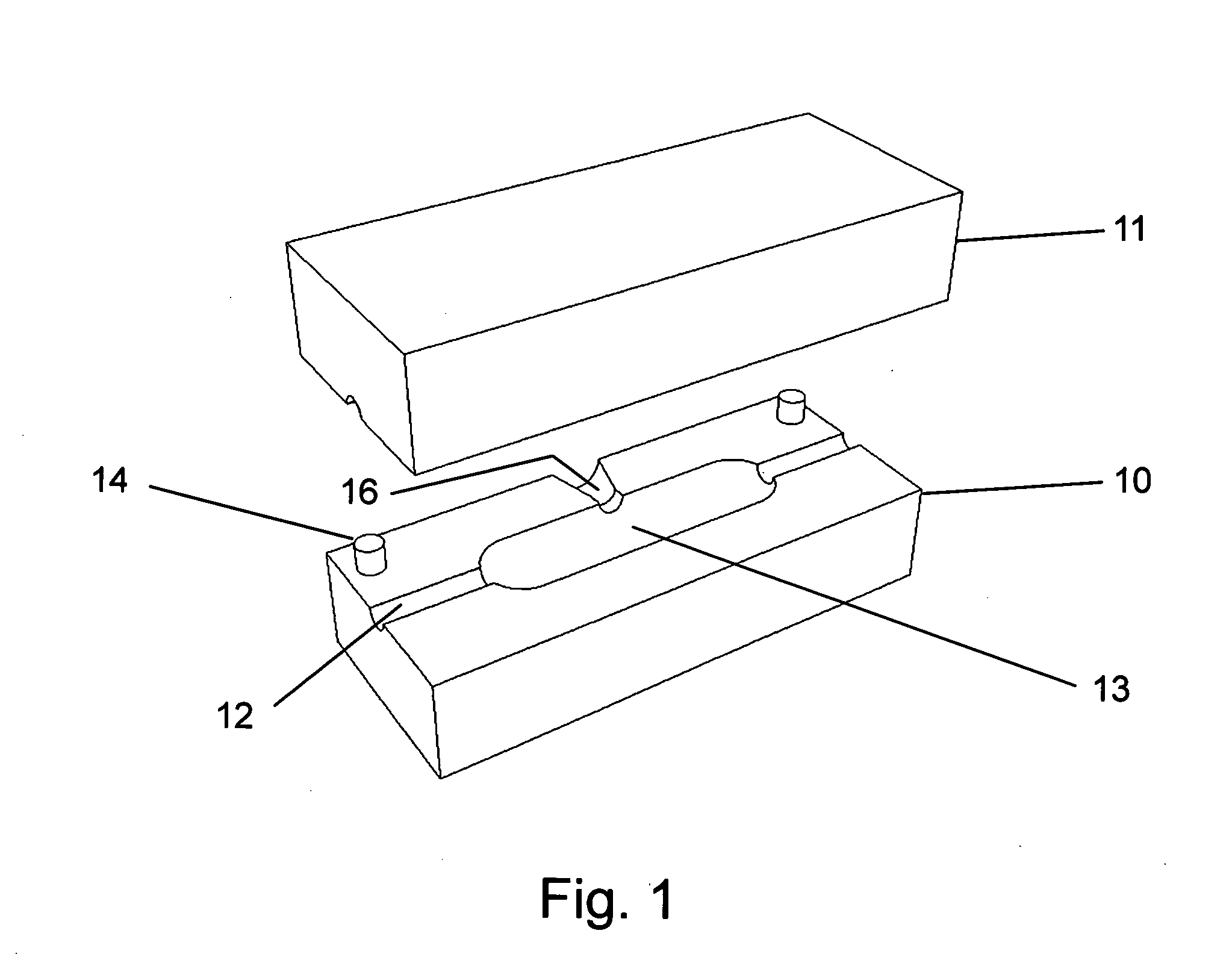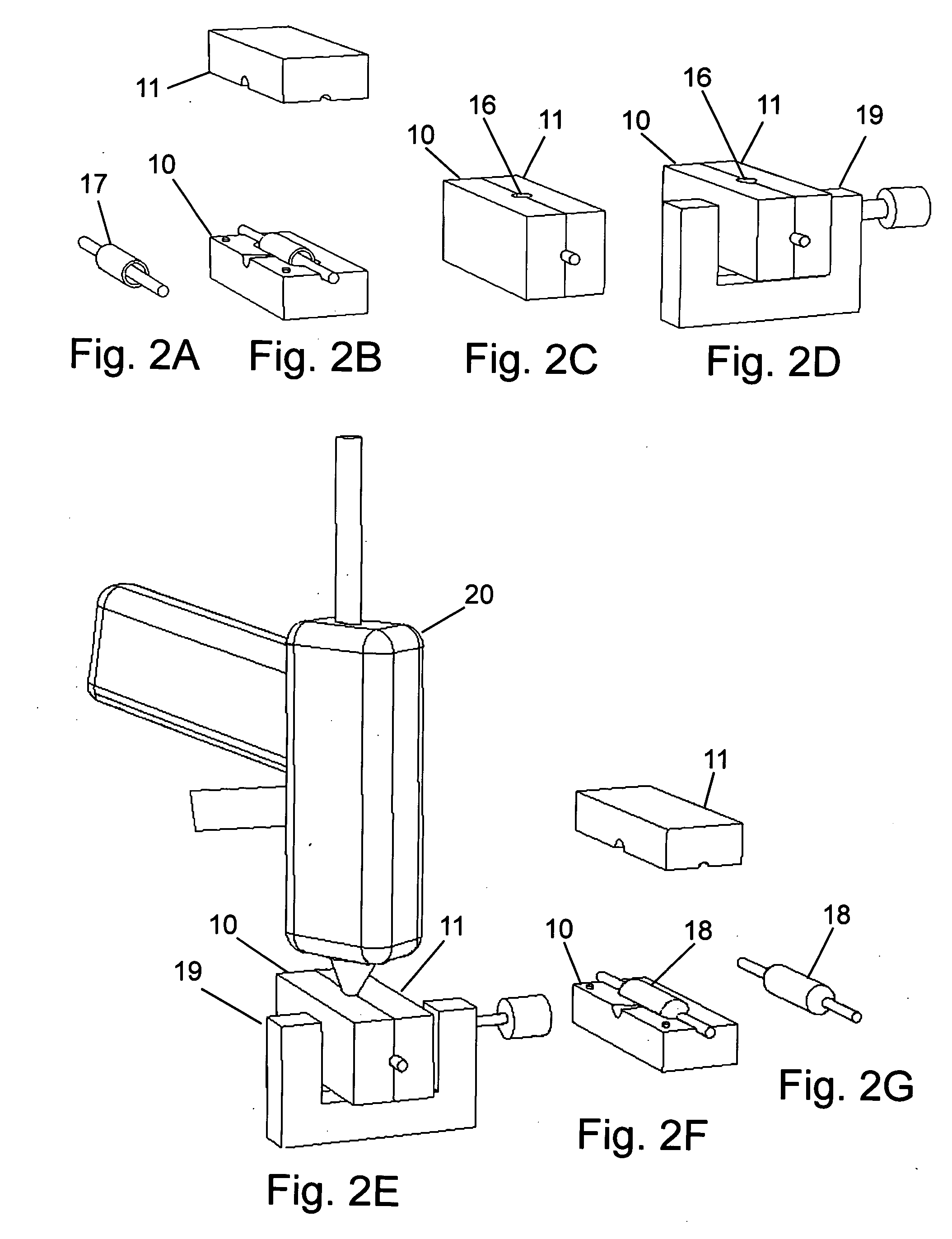Method and apparatus for encapsulating wire, hose, and tube splices, connections, and repairs
a technology for encapsulating splices and hoses, applied in the field of encapsulation of splices, connections, and repairs of wires, hoses and tubes, can solve the problems of affecting the appearance of finished results, often failing electrical wiring splices, and significantly more expensive than applying the materials as described
- Summary
- Abstract
- Description
- Claims
- Application Information
AI Technical Summary
Benefits of technology
Problems solved by technology
Method used
Image
Examples
first embodiment
FIG. 1—First Embodiment
[0032]One embodiment of the invention is illustrated in FIG. 1. The apparatus consists of two mold halves, mold base 10 and mold cover 11. Mold halves are constructed of aluminum or other heat resistant material. The mold halves feature close fitting apertures or grooves 12 allowing a prepared splice assembly 17 being encapsulated passage into the mold cavity 13. The mold halves feature alignment pins 14 for precise alignment of the mold halves, and may or may not have a hinge, latching device, or other alignment aids. The mold cavity 13 is of the appropriate size and shape for the conductor and splice type being encapsulated (i.e. butt splice, crimp cap, terminal, etc.). The mold assembly can have one or more apertures, grooves or openings at each end, one or more openings on adjacent sides, or no openings on one or more sides for conductors so oriented. FIG. 1 shows a perspective view of this embodiment containing the mold base 10 shown with alignment pins 1...
PUM
| Property | Measurement | Unit |
|---|---|---|
| size | aaaaa | aaaaa |
| shape | aaaaa | aaaaa |
| corrosion | aaaaa | aaaaa |
Abstract
Description
Claims
Application Information
 Login to View More
Login to View More - R&D
- Intellectual Property
- Life Sciences
- Materials
- Tech Scout
- Unparalleled Data Quality
- Higher Quality Content
- 60% Fewer Hallucinations
Browse by: Latest US Patents, China's latest patents, Technical Efficacy Thesaurus, Application Domain, Technology Topic, Popular Technical Reports.
© 2025 PatSnap. All rights reserved.Legal|Privacy policy|Modern Slavery Act Transparency Statement|Sitemap|About US| Contact US: help@patsnap.com



